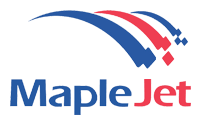In the competitive and ever-evolving world of food manufacturing, ensuring that your products are accurately marked and comply with industry standards is more important than ever. The right inkjet marking system not only enhances your product’s traceability but also ensures adherence to regulatory requirements and improves overall operational efficiency. In this comprehensive guide, we will dig into the essential aspects of selecting an inkjet marking system for your food packaging needs. We will also explain why investing in a efficient inkjet printer capable of producing 2D barcodes is crucial for meeting the GS1 Sunrise 2027 requirements. Additionally, we will compare different inkjet technologies and highlight why the MapleJet Hx Nitro thermal inkjet printer is an ideal choice for food packaging applications.
The Importance of an Industrial Inkjet Marking System
1. Enhanced Accuracy and Reliability
In the food manufacturing industry, accuracy and reliability in coding & marking are non-negotiable. A industrial inkjet printer is designed to provide precise and consistent markings on various packaging materials, whether you are dealing with cartons, bottles, pouches, or other types of packaging. This consistency is vital for printing critical information such as expiration dates, lot numbers, and batch codes. With an industrial inkjet marking system, you can be confident that every package is marked correctly, reducing the risk of errors and ensuring that all products are traceable.
2. Versatility in Marking
MapleJet’s Inkjet marking systems offer exceptional versatility in printing different types of information. From simple alphanumeric codes to complex graphics and logos, these machines can handle a wide range of marking requirements. In the food industry, packaging often requires detailed and legible information, including ingredient lists, nutritional facts, and regulatory compliance codes. An industrial inkjet coder provides the flexibility needed to meet these diverse marking needs, ensuring that all essential details are clearly visible to consumers and regulators.

3. Reduced Maintenance and Downtime
One of the significant advantages of modern inkjet printers is their reduced maintenance requirements and minimized downtime. Features such as high-quality ink formulations contribute to the printer’s longevity and reliability. This is particularly important in the food industry, where production schedules are tight, and any interruption can lead to substantial losses. A reliable inkjet marking system ensures continuous operation, helping to maintain productivity and reduce operational costs.
Key Considerations for Food Packaging
1. Compliance with GS1 Sunrise 2027
As the GS1 Sunrise 2027 deadline approaches, food manufacturers must ensure that their packaging complies with new standards for barcode printing. The GS1 Sunrise 2027 initiative mandates that all products, including food items, feature GS1 DataBar or 2D barcodes to improve traceability and enhance the consumer experience. These barcodes are designed to store more information than traditional barcodes, such as batch numbers and expiration dates, and can be scanned by advanced point-of-sale systems. Investing in an inkjet marking system capable of producing these 2D barcodes will make sure that your products meet industry standards and are ready for the future requirements.
2. Compatibility with Packaging Materials
Food packaging comes in various forms, including cartons, bottles, pouches, and more. Each packaging type may have different surface characteristics, such as porosity or glossiness, which can affect the quality of the printed code. It is essential to select the right inkjet marking machine that is compatible with the types of materials used in your packaging. MapleJet inkjet printer ensures that the printer can handle specific surface characteristics of your packaging, whether it’s glass, plastic, or paper, and deliver high-quality prints consistently.
3. Ease of Integration
Integrating a new inkjet marking system into an existing production line can be a complex process. Therefore, it is crucial to choose a printer that offers easy integration with your current setup. Look for machines with user-friendly interfaces and straightforward setup processes. Additionally, consider whether the system provides flexibility for future upgrades and changes in marking requirements. A printer that integrates seamlessly into your production line will minimize disruptions and ensure a smooth transition.
Comparing Thermal Inkjet, Continuous Inkjet, and TTO Printers for 2D Barcodes
1. Thermal Inkjet Printers
Thermal inkjet printers are known for their high-resolution printing capabilities, making them well-suited for producing detailed 2D barcodes. These printers work by heating ink to create precise droplets, which are then deposited onto the packaging material. This technology allows for fine control over droplet size and placement, ensuring that complex barcodes are printed with sharp, clear details. also offer minimal maintenance requirements and are relatively easy to integrate into existing production lines. Their ability to produce high-quality, durable barcodes makes them a preferred choice for applications requiring high-resolution printing.
2. Continuous Inkjet Printers
Continuous inkjet (CIJ) printers are designed for high-speed production environments and can print on a variety of surfaces. They operate by continuously circulating ink and using electrical charges to direct ink droplets onto the packaging material. While CIJ printers are effective for many marking tasks, achieving the high resolution required for 2D barcodes can be challenging. The technology used in CIJ printers may not always provide the precision needed for complex barcode printing. Additionally, CIJ printers often require more frequent maintenance and cleaning to ensure optimal performance, which can impact production efficiency.
3. Thermal Transfer Overprinter (TTO)
Thermal transfer overprinters (TTO) are another option for printing high-quality codes and variable information on flexible packaging. TTO printers use heat to transfer ink from a ribbon onto the packaging material, creating durable and clear prints. While TTO printers can produce good resolution, they may not always match the precision of thermal inkjet printers, especially for detailed 2D barcodes. TTO printers are effective on specific types of substrates but may have limitations when printing on a wide range of packaging materials.
Why MapleJet Hx Nitro Thermal Inkjet Printers Are Ideal
1. Exceptional Print Quality
The MapleJet Hx Nitro thermal inkjet printer stands out for its exceptional print quality. With its high-resolution capabilities, the Hx Nitro can produce detailed 2D barcodes that meet the GS1 Sunrise 2027 requirements. The printer’s advanced technology ensures that each barcode is printed with sharp, clear details, enhancing product traceability and compliance with industry standards.

2. Easy Integration and Low Maintenance
One of the key advantages of the MapleJet Hx Nitro printer is its ease of integration into existing production lines. The printer’s user-friendly interface and straightforward setup process make it easy to fit into your current setup with minimal to no disturbance. Additionally, the Hx Nitro is designed for low maintenance, reducing the need for frequent cleaning and servicing. This reliability helps to keep your production line running smoothly and efficiently.
3. Versatility and Flexibility
The Hx Nitro printer offers versatility and flexibility in its printing capabilities. It is compatible with a wide range of packaging materials, including flexible and rigid surfaces. This adaptability makes it suitable for diverse food packaging requirements. The printer’s advanced features allow for flexible configuration of print settings, accommodating different packaging types and sizes, and ensuring high-quality prints across various applications.
4. Cost-Effective Operation
The MapleJet Hx Nitro is designed with cost-effectiveness in mind. Its features help to reduce ink consumption and operational costs, making it a cost-effective solution for high-volume production environments. The printer’s efficiency ensures that you get the most value for your investment while maintaining high standards for marking and coding.
Conclusion
Selecting the right inkjet marking system is a crucial decision for food manufacturing companies aiming to maintain compliance, ensure product traceability, and enhance operational efficiency. By investing in a high-quality inkjet marking machine that supports GS1 Sunrise 2027 requirements and offers superior print quality, reliability, and ease of integration, you can stay ahead of industry standards and meet the evolving demands of your customers.
Thermal inkjet printers, particularly the MapleJet Hx Nitro, offer a compelling choice for printing 2D barcodes due to their high resolution, minimal maintenance, and versatility. With the ability to produce sharp, clear barcodes that comply with industry standards, the Hx Nitro is an ideal solution for food packaging applications.
If you’re ready to explore the best inkjet marking systems for your food packaging needs, Contact Us today to discover how the MapleJet Hx Nitro thermal inkjet printer can be the perfect fit for your business. Ensure your products are marked with precision, comply with regulatory requirements, and enhance your operational efficiency with the right inkjet marking system.




Recent Comments